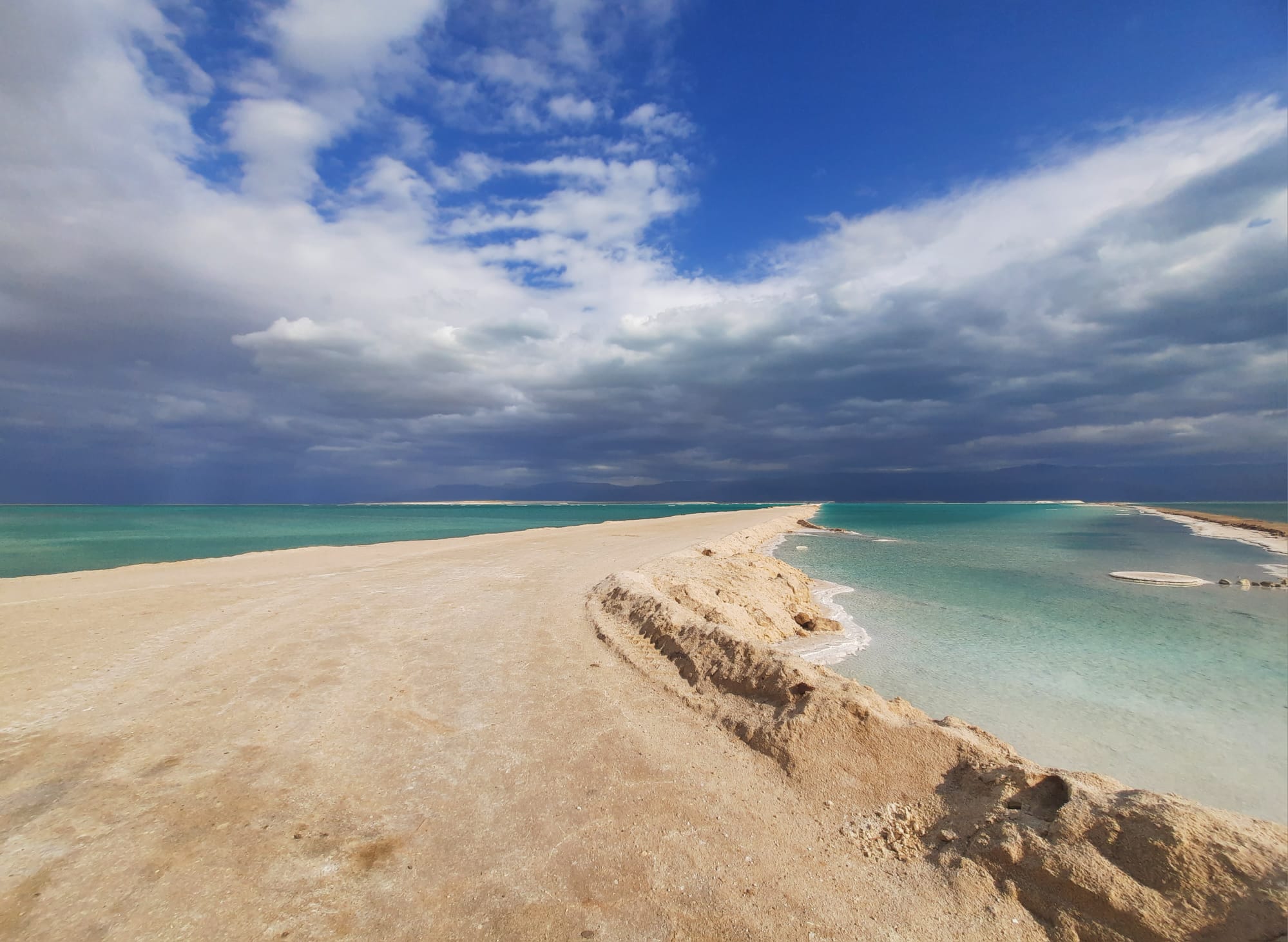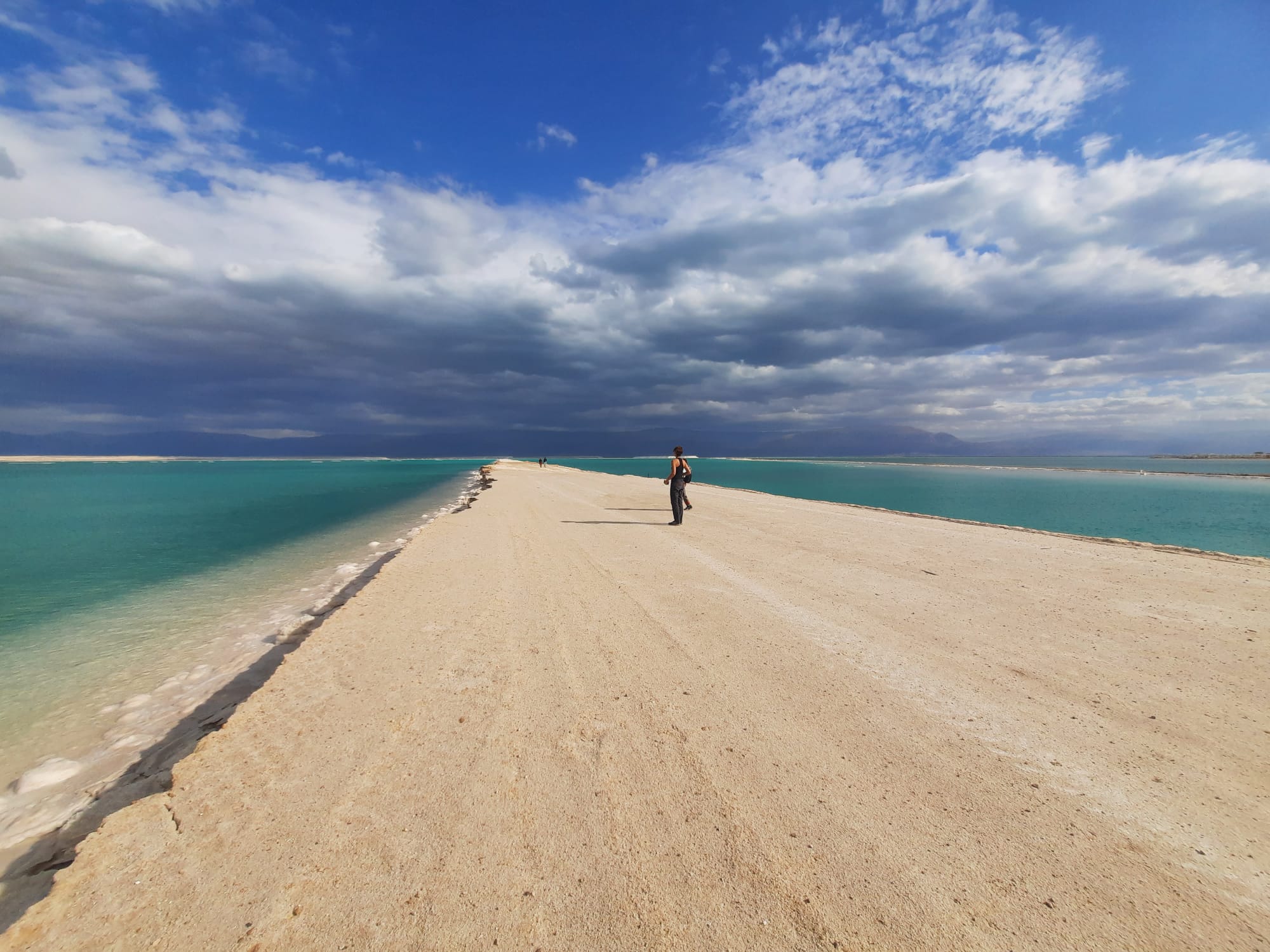Route type: Circular
Difficulty level: Strenuous
Waze to start point: Masada Eastern Parking
Notes:
- Start early to beat the heat. This hike has little shade and 2 strenous ascents. Even in the winter, I was sweating.
- Do not hike here if there are flood warnings in the area! If you are not sure, ask a more experienced hiker or check the Israel Meteorological Service website.
- Not suitable for dogs.
- This is a National Park (hours: 8:00-15:00) but you only have to pay if you intend to ascend the mountain either on foot or by cable car.
After a 3 month hiatus due to the war, we have resumed hiking as war and weather permit. The weather on Friday in most of the country was extremely stormy. Reports on weather in the Dead Sea area were conflicting and confusing and nearly scared us off the idea. In the end we decided to take a chance and drive down to the Dead Sea to assess the situation for ourselves.
We arrived on location to find warm sun, chill wind and mostly clear skies. The perfect winter desert. We began walking at 8:20 a.m.
The drama of black-bottomed clouds sweeping across that scenery was breathtaking and the sporadic clouds were good for photography.
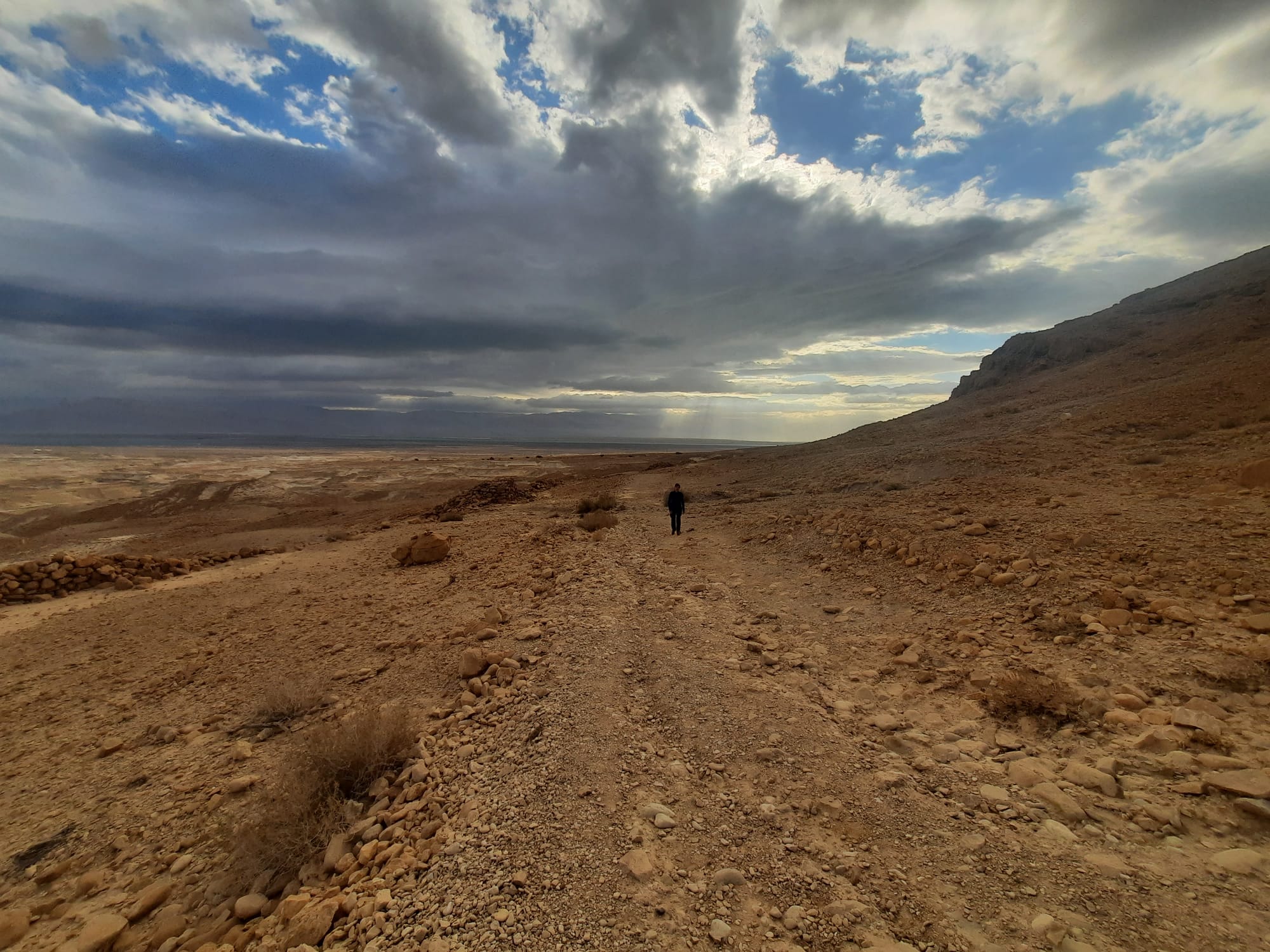
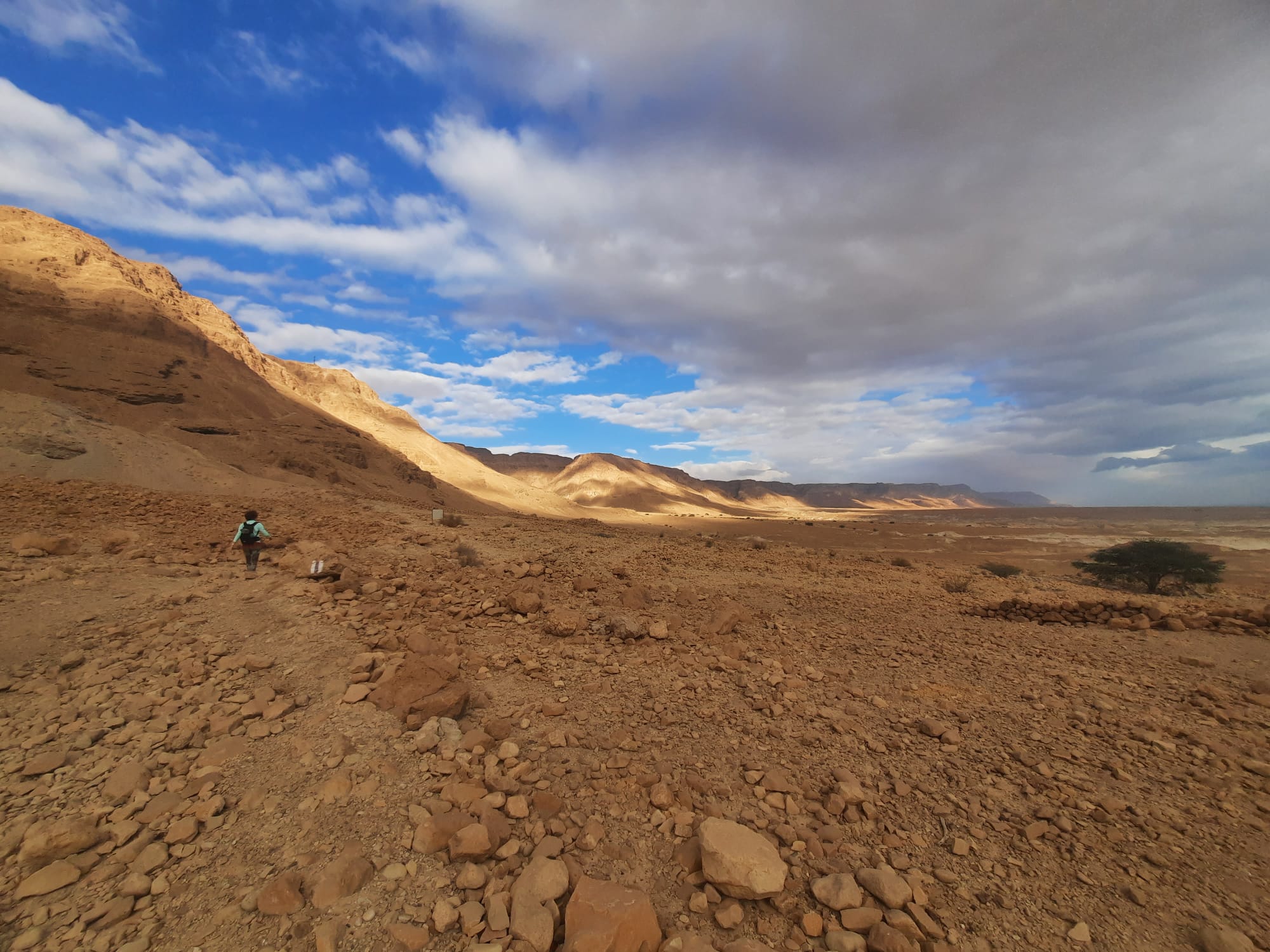
Sometimes the trail hugged the side of the cliff. At other times, there were metal railings to aid us in hoisting ourselves up the steeper ascents.
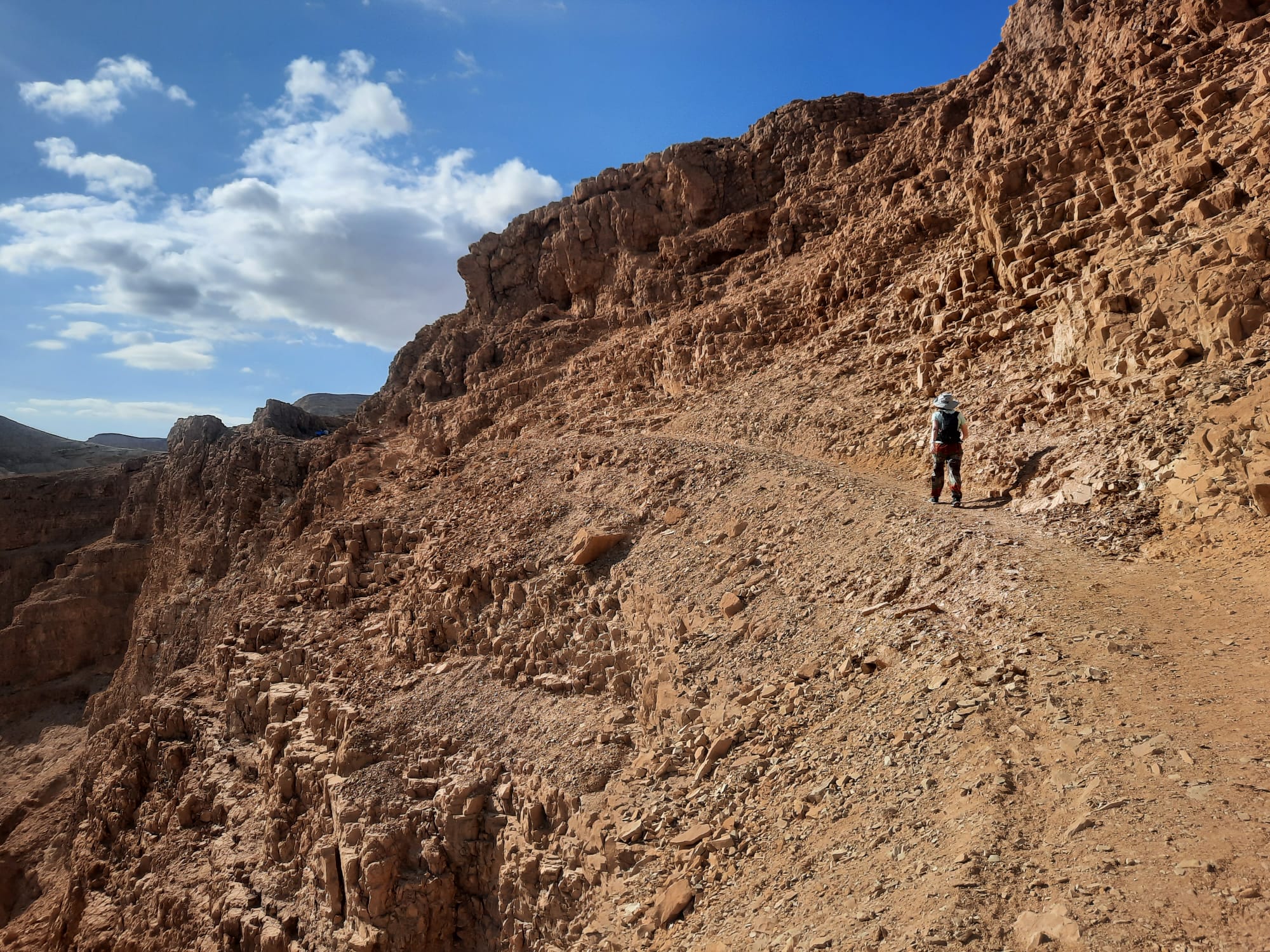
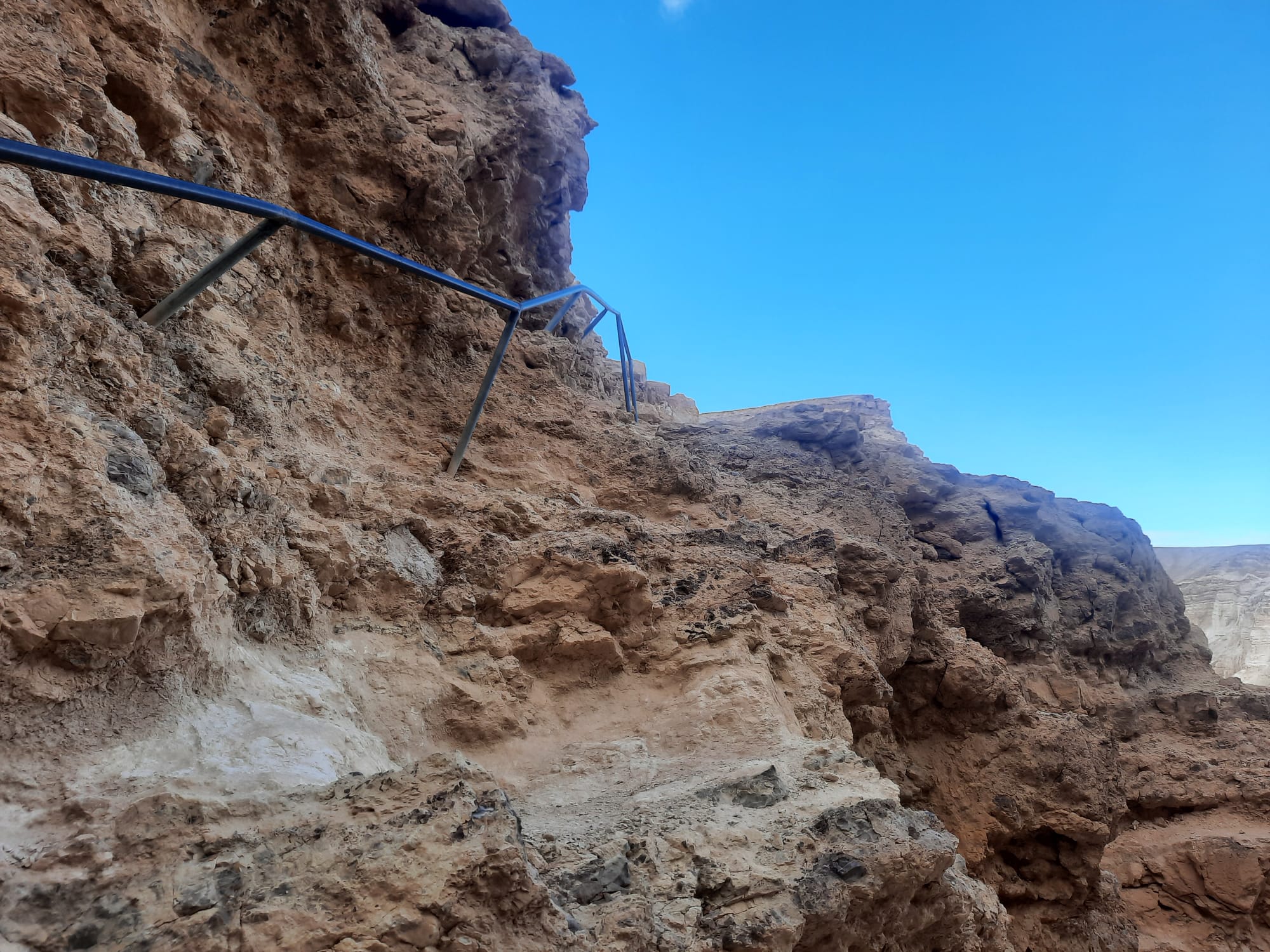
There were two points at which you could ascend to the top of Masada – one from the Eastern parking lot where we’d started from and the other from the Western parking lot. We did neither. This trail gave us the opportunity to view the mountain from all sides which was a unique perpsective.
Masada is an ancient fortification in southern Israel, situated on top of an isolated rock plateau. It is located on the eastern edge of the Judaean Desert, overlooking the Dead Sea.
Herod the Great built two palaces for himself on the mountain and fortified Masada between 37 and 31 BCE. He built a 4 m (13 ft) high casemate wall around the plateau totalling 1,300 m (4,300 ft) in length, reinforced by many towers. The fortress contained storehouses, barracks, an armory, a palace, and a series of cisterns (capacity around 40,000 cubic metres) that were refilled by rainwater – with the runoff collected from a single day’s rain allegedly able to sustain over 1,000 people for 2 to 3 years.
The siege of Masada by Roman troops from 73 to 74 CE, at the end of the First Jewish–Roman War, ended in the mass suicide of the 960 Jewish rebels who made their last stand there.
Masada is one of Israel’s most popular tourist attractions. The mountain attracts around 750,000 visitors a year.
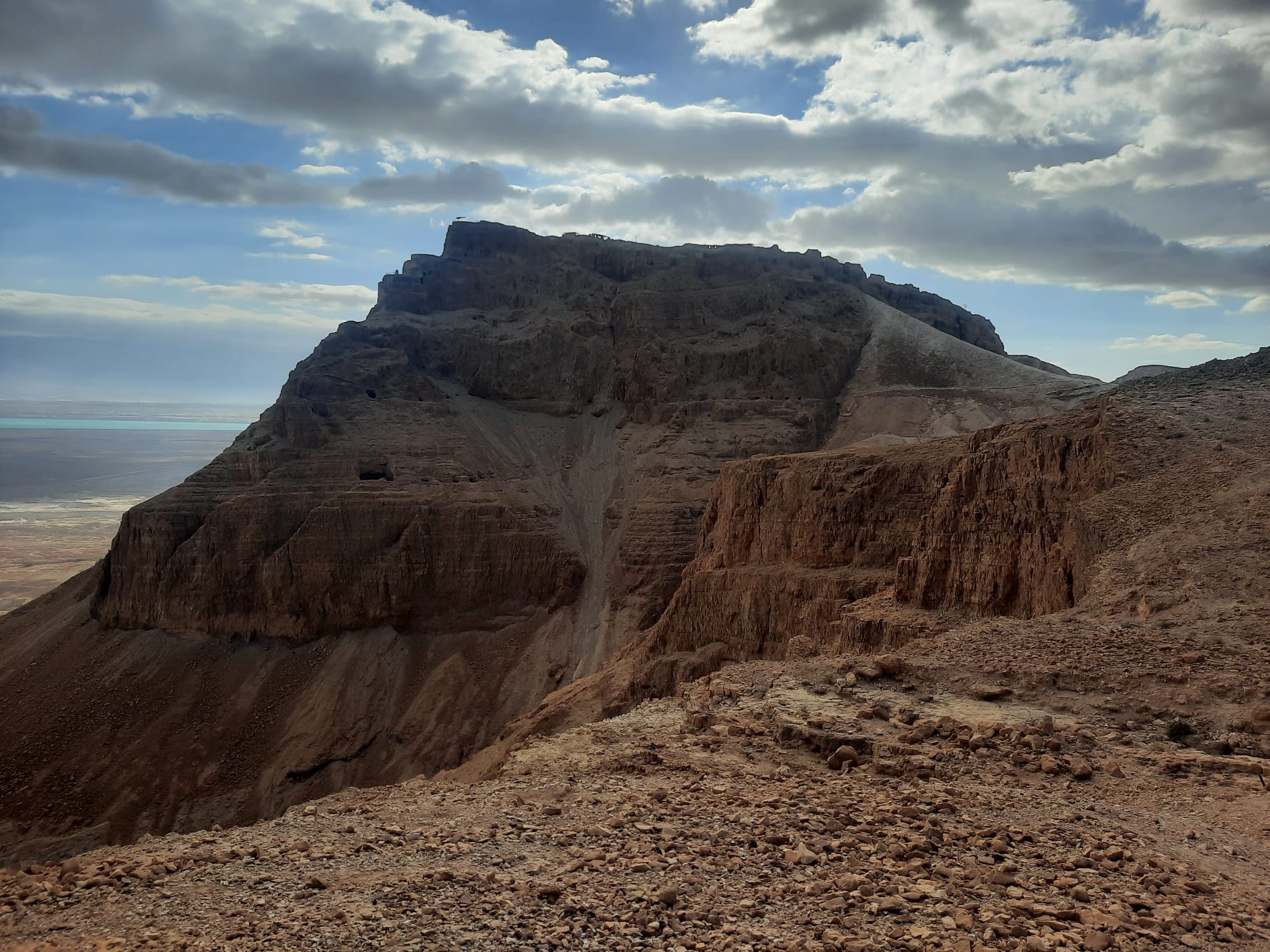
At the beginning of the day, the clouds covered the Dead Sea so it wasn’t shining that vivid blue. Only a bit later was it easily seen from several vantage points.
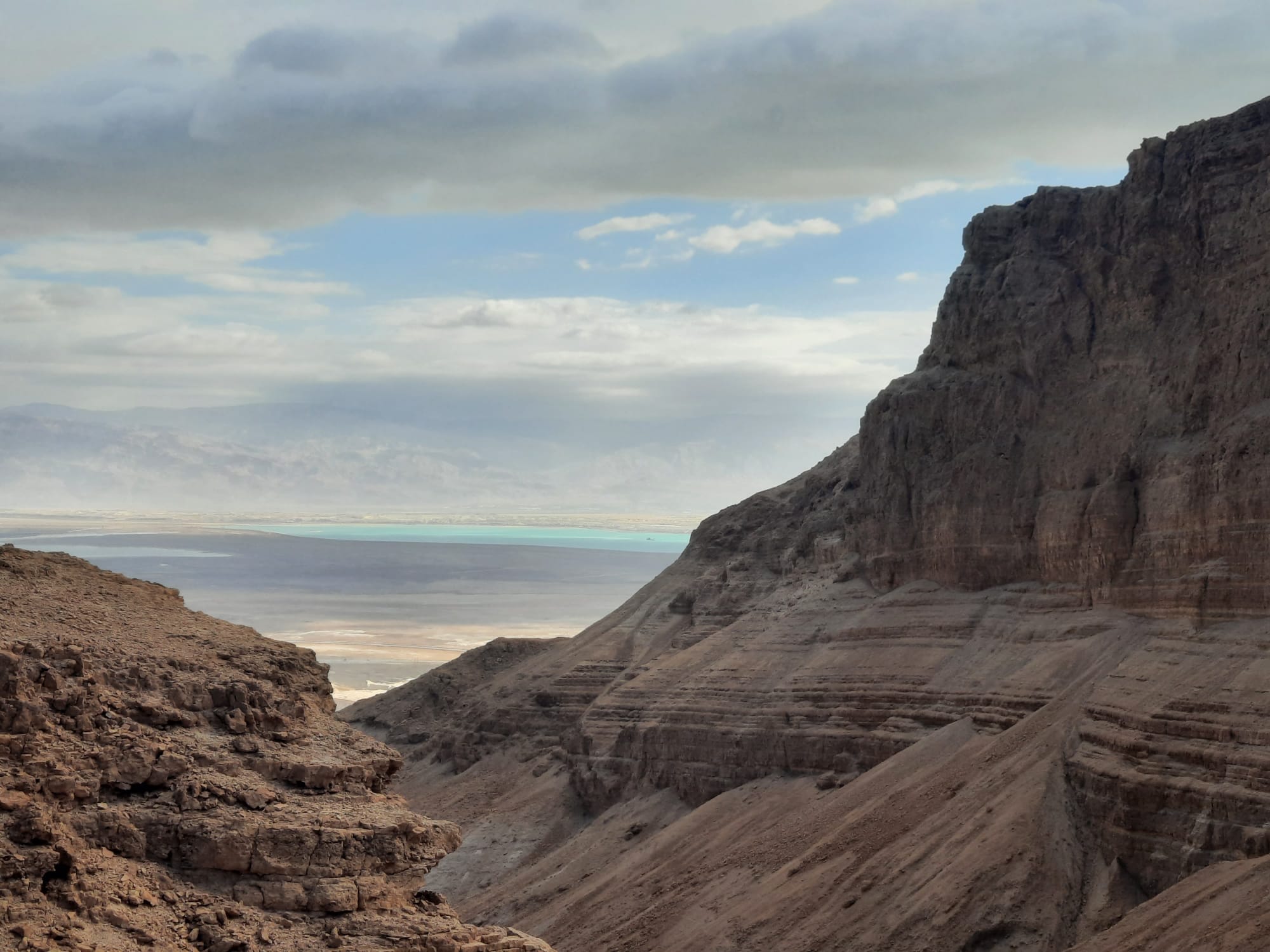
This path up between the two “arms” of the cliff was one of two challenging ascents…..
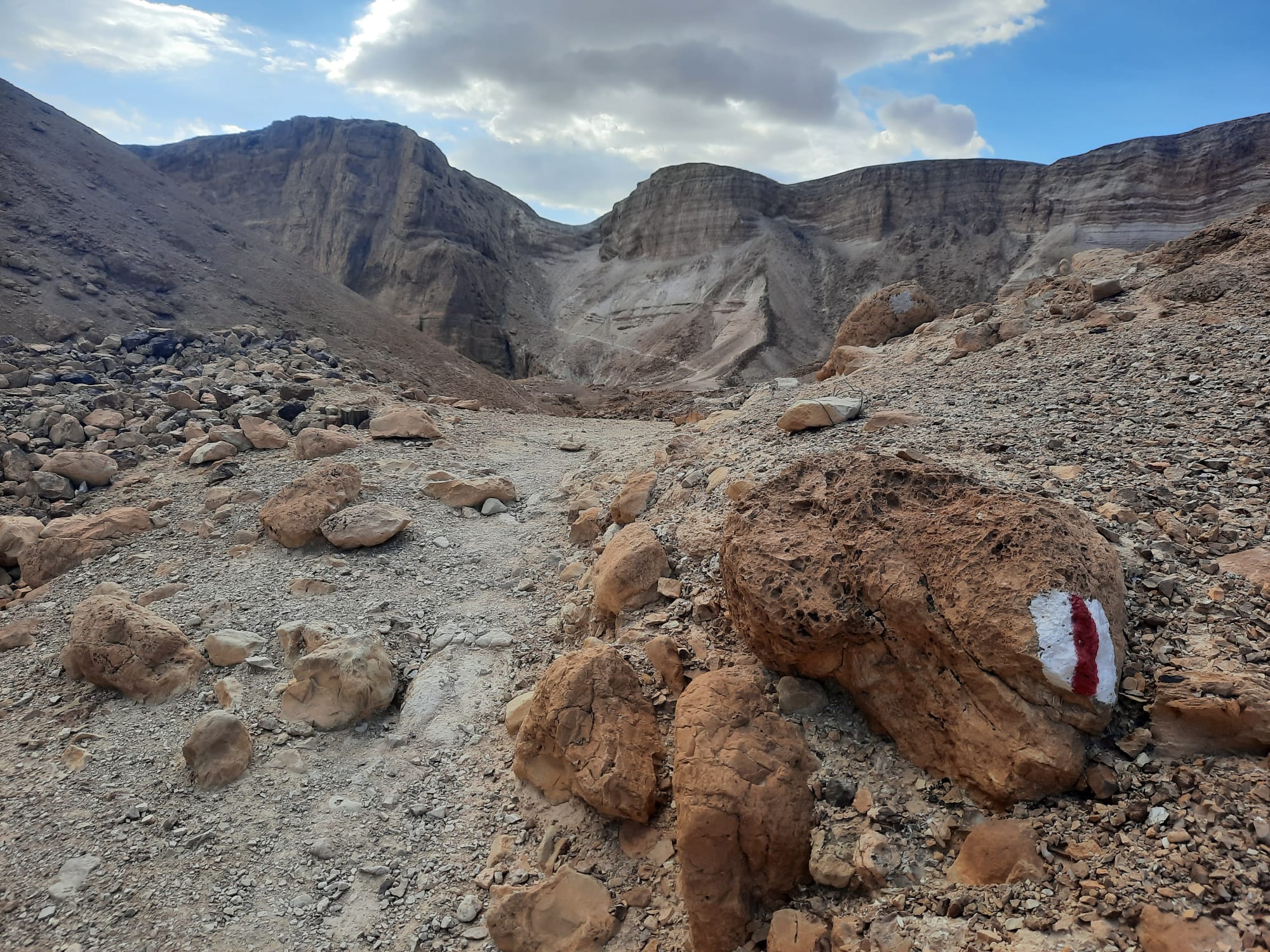
…but was well worth it for the view.

My weather app had predicted heavy clouds around 11:00 a.m. just as we reached summit. The app wasn’t wrong.
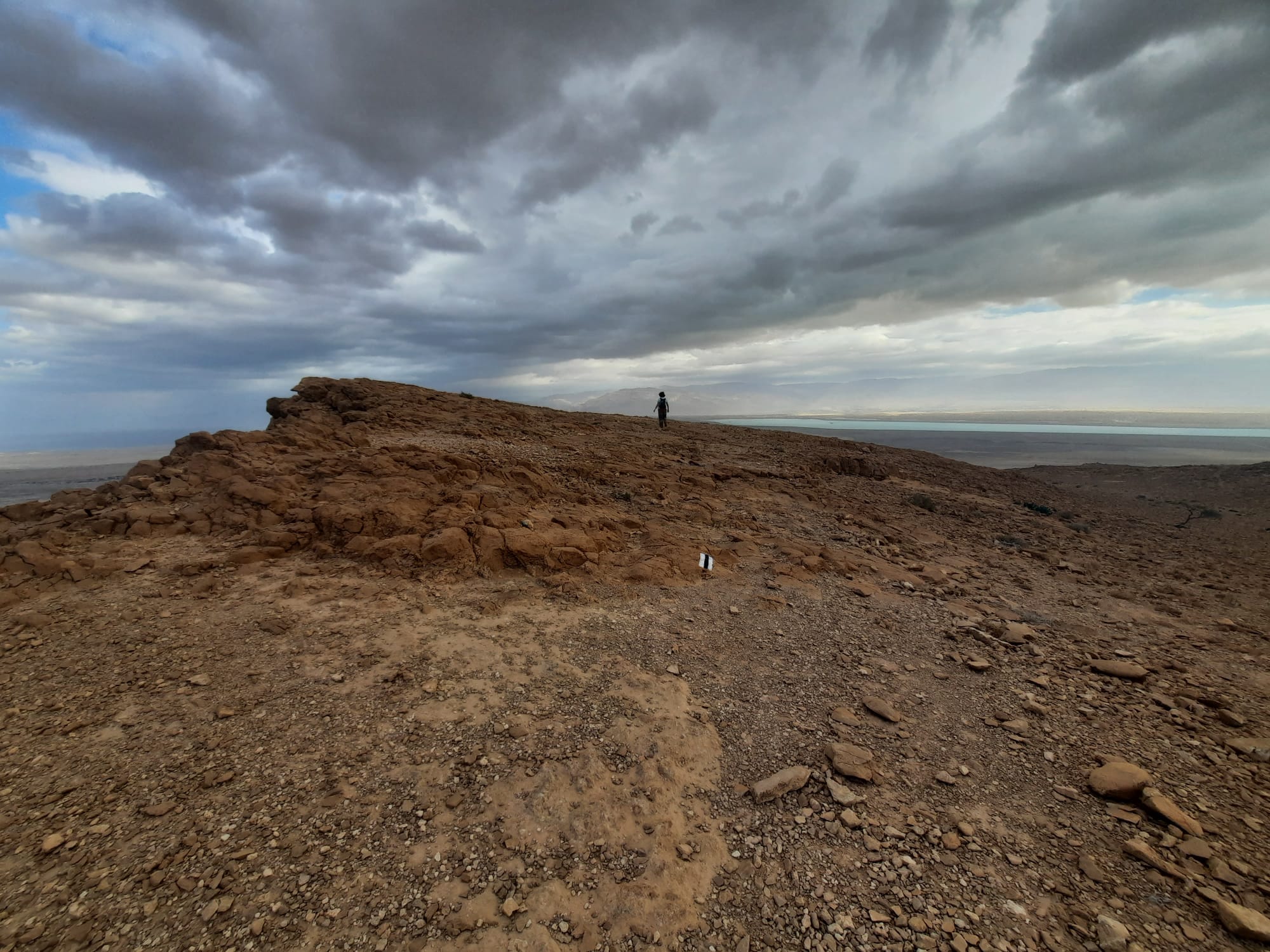
A little dawdle at the summit to take in the views and then we began a s t e e p descent back down to the parking lot.
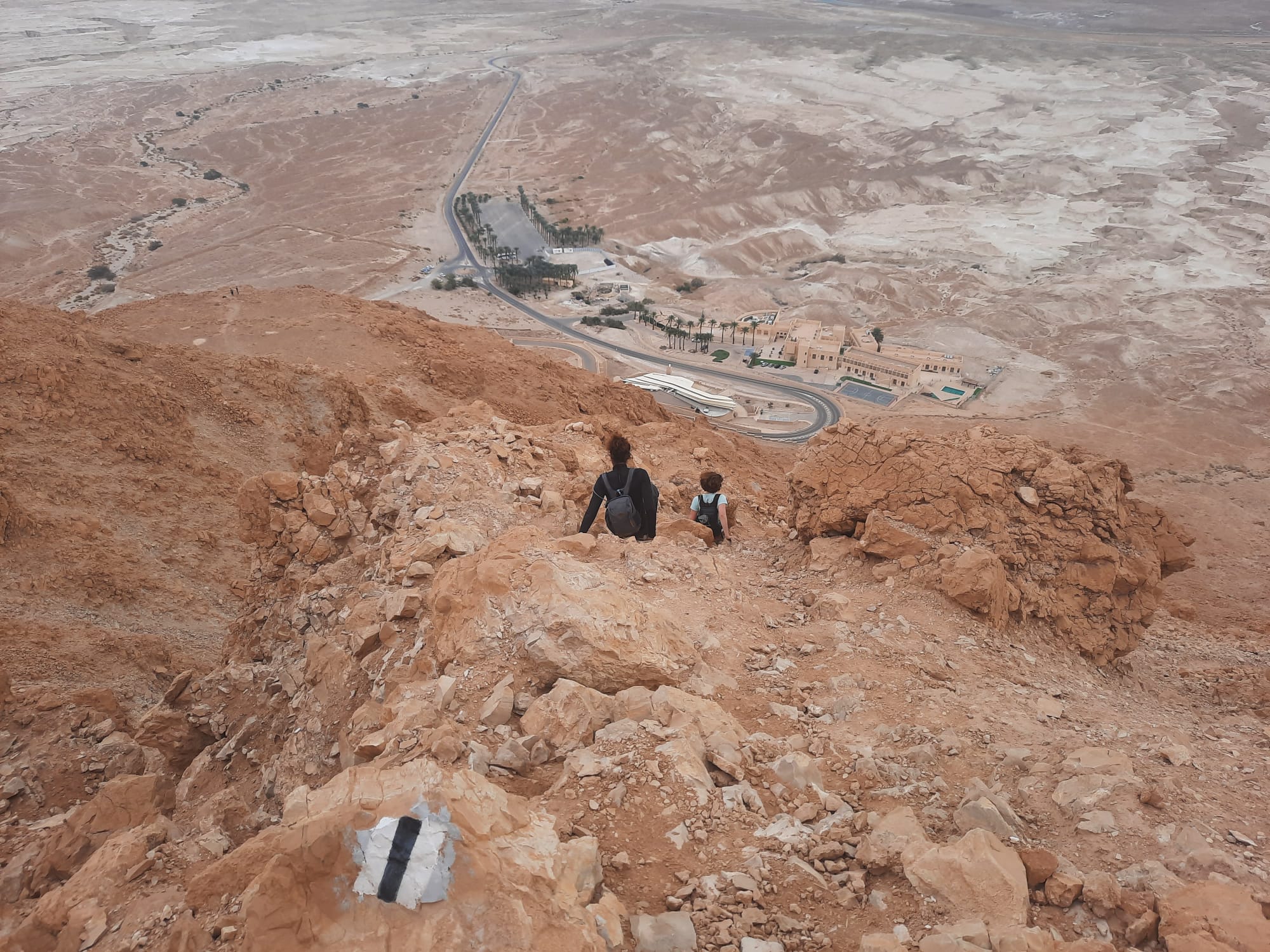
We completed the loop trail by noon and still had time to spare so we drive 15 minutes south to Ein Bokek for a stop at Aroma – our hike’s-end tradition – followed by a quick stop at the “salt walkway”, also at Ein Bokek.
I had been here twice before but the Dead Sea in general is such a fascinating and beautiful place that I couldn’t resist a reason to linger.
